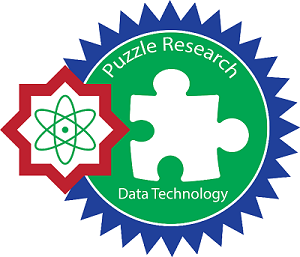ADDITIONAL MENU
Application of the Artificial Neural Network Algorithm to Predict the Realization of the Duty Tax on the Name of Motor Vehicles in Lampung Province
Abstract
Regional taxes, specifically the Motor Vehicle Name Return Tax (BBNKB), provide the primary source of revenue for regions from the several forms of taxes. The BBNKB tax is crucial in funding government and regional development due to its significant annual growth, encompassing four-wheeled and two-wheeled vehicles. Furthermore, the BBNKB tax catalyzes regional economic expansion and significantly contributes to the government's income. Hence, predicting and forecasting the BBNKB Tax in Lampung Province is necessary to monitor future tax rate fluctuations. That will enable the government to devise innovative tax payment systems and establish tax revenue targets. This study utilizes the Artificial Neural Network (ANN) methodology, using many approaches for distributing training and testing data to forecast. In addition, we utilize hyper-tuning on several factors to obtain the most favourable configurations. The ideal model achieved has a training data allocation of 80% and a testing data allocation of 20%. It was trained for 50 epochs and used a batch size of 16. The model has exceptional predictability, attaining an accuracy rating of 96.51%. Additionally, it showcases a low Root Mean Square Error (RMSE) of 0.246 and a minimal Mean Absolute Percentage Error (MAPE) score of 3.48%. Therefore, it is appropriate to predict the next two-year term. As a result, the forecast for the amount of tax collected from motor vehicle name returns in Lampung has fluctuated.
Keywords
Artificial Neural Network; BBNKB Tax; Lampung Province; Machine Learning; Predictions
Full Text:
PDFReferences
D. R. Giovani and Y. Y. Padmono, Faktor-Faktor yang Mempengaruhi Penerimaan Pajak Kendaraan Bermotor. 1999.
G. Gosavi and G. Gawde, "Prediction Techniques for Data Mining," 2022. [Online]. Available: https://www.researchgate.net/publication/357955350
M. Arafat, T. Sjafrizal, and R. A. Anugraha, "An artificial neural network approach to predict energy consumption and surface roughness of a natural material," SN Appl. Sci., vol. 2, no. 7, 2020, doi: 10.1007/s42452-020-2987-6.
M. G. M. Abdolrasol et al., "Artificial neural networks based optimization techniques: A review," Electronics (Switzerland), vol. 10, no. 21. 2021. doi: 10.3390/electronics10212689.
Z. E. Mohamed, "Using the artificial neural networks for prediction and validating solar radiation," J. Egypt. Math. Soc., vol. 27, no. 1, 2019, doi: 10.1186/s42787-019-0043-8.
M. Niazkar, "Revisiting the Estimation of Colebrook Friction Factor: A Comparison between Artificial Intelligence Models and C-W-based Explicit Equations," KSCE J. Civ. Eng., vol. 23, no. 10, 2019, doi: 10.1007/s12205-019-2217-1.
M. Niazkar, "Assessment of artificial intelligence models for calculating optimum properties of lined channels," J. Hydroinformatics, vol. 22, no. 5, pp. 1410–1423, 2020, doi: 10.2166/hydro.2020.050.
H. R. Niazkar and M. Niazkar, "Application of artificial neural networks to predict the COVID-19 outbreak," Glob. Heal. Res. Policy, vol. 5, no. 1, 2020, doi: 10.1186/s41256-020-00175-y.
M. Niazkar, N. Talebbeydokhti, and S. H. Afzali, "Bridge backwater estimation: A comparison between artificial intelligence models and explicit equations," Sci. Iran., vol. 28, no. 2, pp. 573–585, Mar. 2021, doi: 10.24200/sci.2020.51432.2175.
A. R. Florea and M. Roman, "Artificial neural networks applied for predicting and explaining the education level of Twitter users," Soc. Netw. Anal. Min., vol. 11, no. 1, 2021, doi: 10.1007/s13278-021-00832-1.
B. Yang, K. Fu, J. Lee, and Y. Li, "Artificial Neural Network (ANN)-Based Residual Strength Prediction of Carbon Fibre Reinforced Composites (CFRCs) After Impact," Appl. Compos. Mater., vol. 28, no. 3, pp. 809–833, 2021, doi: 10.1007/s10443-021-09891-1.
S. Kumar, V. Kumar, and A. K. Singh, "Prediction of maximum pressure of journal bearing using ANN with multiple input parameters," Aust. J. Mech. Eng., vol. 20, no. 4, pp. 1069–1078, 2022, doi: 10.1080/14484846.2020.1769540.
S. Fidan, H. Oktay, S. Polat, and S. Ozturk, "An Artificial Neural Network Model to Predict the Thermal Properties of Concrete Using Different Neurons and Activation Functions," Adv. Mater. Sci. Eng., vol. 2019, 2019, doi: 10.1155/2019/3831813.
I. H. Naser, A. M. Mahdi, and Y. H. Jasim, "Performance of Artificial Neural Networks (ANN) at Transportation Planning Model," in IOP Conference Series: Materials Science and Engineering, 2020. doi: 10.1088/1757-899X/928/2/022032.
S. Kareem, Z. J. Hamad, and S. Askar, "An evaluation of CNN and ANN in prediction weather forecasting: A review," Sustain. Eng. Innov., vol. 3, no. 2, pp. 148–159, 2021, doi: 10.37868/sei.v3i2.id146.
Y. Baashar et al., "Toward Predicting Student's Academic Performance Using Artificial Neural Networks (ANNs)," Appl. Sci., vol. 12, no. 3, 2022, doi: 10.3390/app12031289.
S. Setti and A. Wanto, "Analysis of Backpropagation Algorithm in Predicting the Most Number of Internet Users in the World," J. Online Inform., vol. 3, no. 2, p. 110, 2019, doi: 10.15575/join.v3i2.205.
K. Maharana, S. Mondal, and B. Nemade, "A review: Data preprocessing and data augmentation techniques," Glob. Transitions Proc., vol. 3, no. 1, pp. 91–99, Jun. 2022, doi: 10.1016/j.gltp.2022.04.020.
I. Pisa, I. Santín, J. L. Vicario, A. Morell, and R. Vilanova, "Data preprocessing for ANN-based industrial time-series forecasting with imbalanced data," in European Signal Processing Conference, 2019. doi: 10.23919/EUSIPCO.2019.8902682.
A. I. Kadhim, "An Evaluation of Preprocessing Techniques for Text Classification," Int. J. Comput. Sci. Inf. Secur., vol. 16, no. 6, pp. 22–32, 2018, [Online]. Available: https://sites.google.com/site/ijcsis/
O. Azeroual, G. Saake, and M. Abuosba, "Data Quality Measures and Data Cleansing for Research Information Systems," 2019, [Online]. Available: http://arxiv.org/abs/1901.06208
M. M. Ahsan, M. A. P. Mahmud, P. K. Saha, K. D. Gupta, and Z. Siddique, "Effect of Data Scaling Methods on Machine Learning Algorithms and Model Performance," Technologies, vol. 9, no. 3, 2021, doi: 10.3390/technologies9030052.
S. Sinsomboonthong, "Performance Comparison of New Adjusted Min-Max with Decimal Scaling and Statistical Column Normalization Methods for Artificial Neural Network Classification," Int. J. Math. Math. Sci., vol. 2022, 2022, doi: 10.1155/2022/3584406.
D. Borkin, A. Némethová, G. Michaľčonok, and K. Maiorov, "Impact of Data Normalization on Classification Model Accuracy," Res. Pap. Fac. Mater. Sci. Technol. Slovak Univ. Technol., vol. 27, no. 45, pp. 79–84, 2019, doi: 10.2478/rput-2019-0029.
I. O. Muraina, "Ideal Dataset Splitting Ratios in Machine Learning Algorithms: General Concerns for Data Scientists and Data Analysts," 7th Int. Mardin Artuklu Sci. Res. Conf., no. February, pp. 496–504, 2022.
S. Kumar, "Data splitting technique to fit any Machine Learning Model | by Sachin Kumar | Towards Data Science," Towards Data Science. [Online]. Available: https://towardsdatascience.com/data-splitting-technique-to-fit-any-machine-learning-model-c0d7f3f1c790
B. T. Pham et al., "A novel hybrid soft computing model using random forest and particle swarm optimization for estimation of undrained shear strength of soil," Sustain., vol. 12, no. 6, pp. 1–16, 2020, doi: 10.3390/su12062218.
L. Yang and A. Shami, "On hyperparameter optimization of machine learning algorithms: Theory and practice," Neurocomputing, vol. 415, pp. 295–316, 2020, doi: 10.1016/j.neucom.2020.07.061.
F. Hutter, L. Kotthof, and J. Vanschoren, Automated machine learning: Methods, Systems, Challenges. 2020.
V. Vijayalakshmi and K. Venkatachalapathy, "Deep neural network for multi-class prediction of student performance in educational data," Int. J. Recent Technol. Eng., vol. 8, no. 2, pp. 5073–5081, 2019, doi: 10.35940/ijrte.B2155.078219.
N. Rochmawati, H. B. Hidayati, Y. Yamasari, H. P. A. Tjahyaningtijas, W. Yustanti, and A. Prihanto, “Analisa Learning Rate dan Batch Size pada Klasifikasi Covid Menggunakan Deep Learning dengan Optimizer Adam,” J. Inf. Eng. Educ. Technol., vol. 5, no. 2, pp. 44–48, 2021, doi: 10.26740/jieet.v5n2.p44-48.
J. Feng and S. Lu, "Performance Analysis of Various Activation Functions in Artificial Neural Networks," in Journal of Physics: Conference Series, 2019. doi: 10.1088/1742-6596/1237/2/022030.
J. E. Hanke and D. Wichern, Business Forecasting (Ninth Edition), vol. 5, no. 1. 2014.
D. Kim, T. Kim, J. Jeon, and Y. Son, "Soil-Surface-Image-Feature-Based Rapid Prediction of Soil Water Content and Bulk Density Using a Deep Neural Network," Appl. Sci., vol. 13, no. 7, 2023, doi: 10.3390/app13074430.
K. Karunia, A. E. Putri, M. D. Fachriani, and M. H. Rois, “Evaluation of the Effectiveness of Neural Network Models for Analyzing Customer Review Sentiments on Marketplace,” Public Research Journal of Engineering, Data Technology and Computer Science, vol. 2, no. 1, pp. 52–59, Apr. 2024, doi: 10.57152/predatecs.v2i1.1100.
DOI: http://dx.doi.org/10.24014/ijaidm.v7i2.29456
Refbacks
- There are currently no refbacks.
Office and Secretariat:
Big Data Research Centre
Puzzle Research Data Technology (Predatech)
Laboratory Building 1st Floor of Faculty of Science and Technology
UIN Sultan Syarif Kasim Riau
Jl. HR. Soebrantas KM. 18.5 No. 155 Pekanbaru Riau – 28293
Website: http://predatech.uin-suska.ac.id/ijaidm
Email: ijaidm@uin-suska.ac.id
e-Journal: http://ejournal.uin-suska.ac.id/index.php/ijaidm
Phone: 085275359942
Journal Indexing:
Google Scholar | ROAD | PKP Index | BASE | ESJI | General Impact Factor | Garuda | Moraref | One Search | Cite Factor | Crossref | WorldCat | Neliti | SINTA | Dimensions | ICI Index Copernicus
IJAIDM Stats










